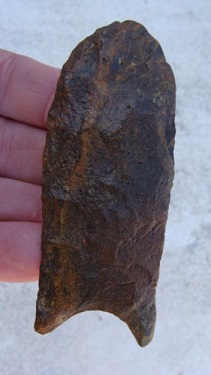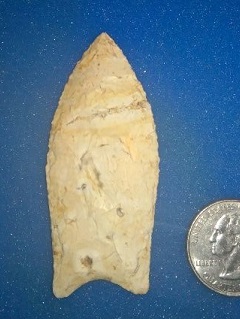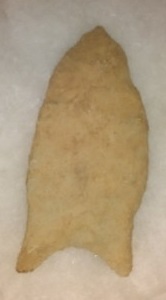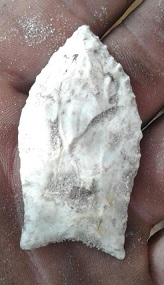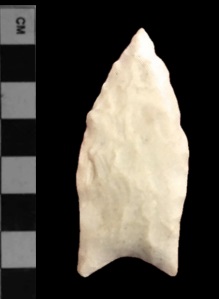Name Details:
Named By: Ripley P. Bullen
Named For: J. Clarence Simpson Collection
Date Identified: 1968
Type Site:
Simpson
Cluster:
Commonly Utilized Material:
coral, chert
Date:
Cultural Period:
12,000 -12,500 B.P.
Late Paleo
Late Pleistocene
Glacial Period:
Culture:
Outline is Representative of Size and Shape:
Description of Physical Characteristics and Flaking Pattern:
This is a medium to large
auriculate lanceolate with a flattened to thin elliptical cross section. The blade is recurvate, curving in at the tip with a constricting waist and flaring back out
towards the base. The base is concave. The base is commonly thinned and grinding is seen on the hafting region. This
point has a random flaking pattern.
Size Measurements: Total Length -
45 to 135 mm (average 50 to 70 mm), Blade Width - 24 to 40 mm
(average 30 to 35 mm), Waist Width - 20 to 30 mm, Basal
Width - 19 to 29 mm (average 24 to 26 mm), Basal
Concavity - 3 to 10 mm (average 5 mm), Thickness - 4 to 13 mm.
Distribution:
Distribution Comments:
This point is primarily found along the
rivers of Florida and into southern Georgina, southeastern Alabama, and southwestern South Carolina.
This point has been reported into central North Carolina.
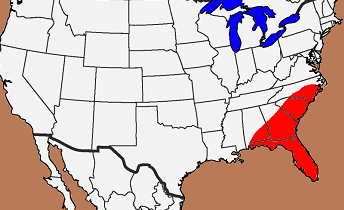
Additional Comments:
The waist is usually longer and narrower waist than other type lanceolate points (Granger and Granger, 2013)
See link below for additional examples
Other points in this Cluster:
Point Validity: Valid Type
Bullen was a distinguished
anthropologist and Curator Emeritus of the Florida Museum of Natural History. He was dedicated to identifying and typing projectile points from Florida. This point was named in a professional publication and is professionally a widely recognized type. This is a valid type.
.
Age Details:
Anderson and Sassaman (1996) place the Simpson
point in the Middle Paleoindian period with a date range of 10,800 to
10,500 B.P.
References: (See Reference Page, Entry Number):
23, 30, 58, 59, 162, W18
Simpson Projectile Point, Simpson Arrowhead


